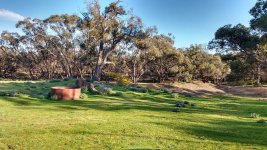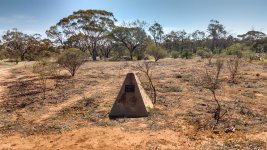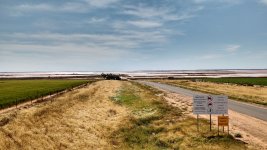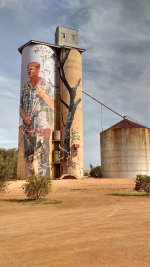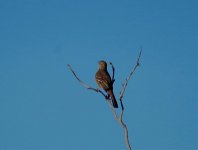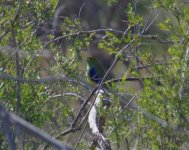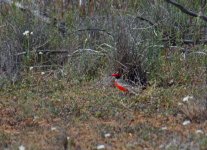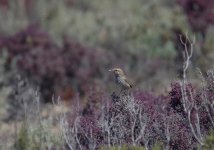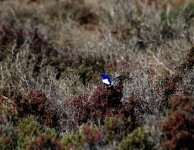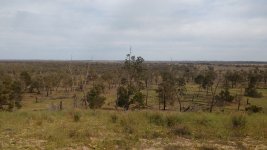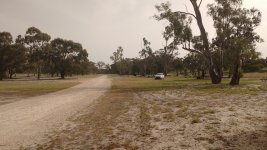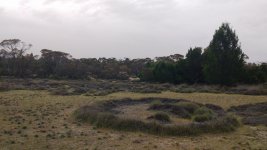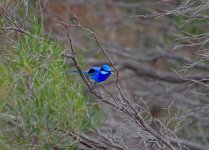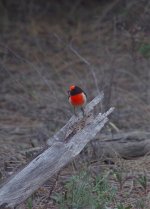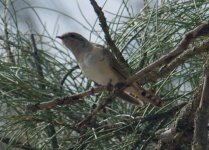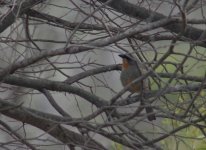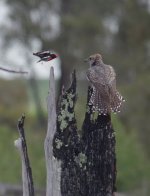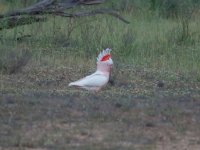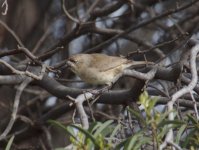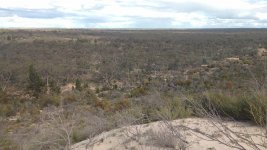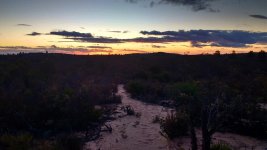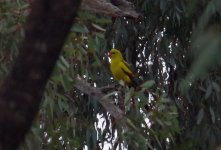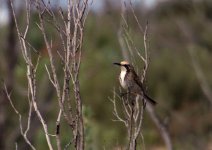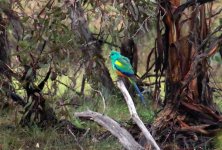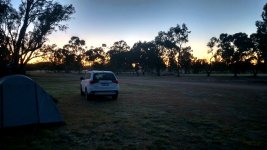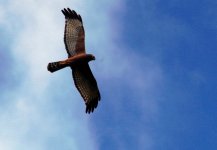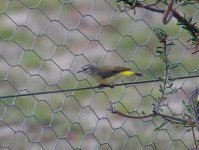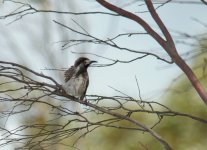MikeMules
Well-known member
Or, how not to see a redthroat (or a malleefowl; or a slender-billed thornbill).
This is a report of my trip last week up into some north-western parts.of the state I haven’t visited yet. My holidays started a week before my kids’ and the wife’s, so with gracious spousal blessing I organised a 4-day solo trip with two aims in mind: to visit places I hadn’t been before, and to try and find Redthroat and Slender-billed Thornbill. These two species are only found in very specific locations in the state, namely Wyperfeld and Little Desert National Parks respectively. And, I’d never visited them before, so that was where I decided to go.
Wyperfeld was the real draw for me. I love the mallee, and have been to Hattah NP many times over the years, Murray Sunset NP a couple of times and have spent quite a bit of time in the South Australian mallee north of Renmark, but had never been to Wyperfeld before. It’s a huge, sprawling park, abutting the Big Desert Wilderness. It’s around 3570 square kilometres (almost exactly the same size as Cornwall), and has a mixture of casuarina, cypress, mallee and ephemeral lake habitats. Unfortunately of me, most of it was inaccessible in my little softroader (a Mitsubishi Outlander), which while capable of some off-road driving, just doesn’t have the clearance to cope with the deep sandy tracks that allow access to the more remote regions of the park. I would just have to go in as far as I could and hope the birding was alright.
About a week and a half before I was due to set off though, reports started coming in of an invasion of White-winged Trillers (an occasional, but not uncommon visitor to the north of the state) and large numbers of Crimson Chats, a very rare sighting in Victoria. Both would be new additions to my Victorian list. At the same time, people had also been seeing, along with the chats and trillers, Black Honeyeaters and Pied Honeyeaters (more potential lifers) at the Goschen Bushland Reserve. Which is another place I’d never been to, but it is about 150km away from where I was going to stay in Wyperfeld. That’s alright, I just needed to adjust a bit, get up a bit earlier, go via Sea Lake instead of Hopetoun. With the added bonus that Lake Tyrell (after which Sea Lake is named) is home to Rufous Fieldwrens (another potential lifer), White-winged Fairywrens and often Orange Chats into the bargain.
So that was the itinerary sorted - Wychitella (250km from home) for breakfast, Goschen an hour further away, then lunch at Lake Tyrell, and head towards Wyperfeld. Then, 3 nights in Wyperfeld (one at Casuarina in the north, and two at Wonga in the south), and finally return home via Nhill and the Little Desert. Now I just had to wait and hope the Crimson Chats wouldn’t disappear before I could get up there.
This is a report of my trip last week up into some north-western parts.of the state I haven’t visited yet. My holidays started a week before my kids’ and the wife’s, so with gracious spousal blessing I organised a 4-day solo trip with two aims in mind: to visit places I hadn’t been before, and to try and find Redthroat and Slender-billed Thornbill. These two species are only found in very specific locations in the state, namely Wyperfeld and Little Desert National Parks respectively. And, I’d never visited them before, so that was where I decided to go.
Wyperfeld was the real draw for me. I love the mallee, and have been to Hattah NP many times over the years, Murray Sunset NP a couple of times and have spent quite a bit of time in the South Australian mallee north of Renmark, but had never been to Wyperfeld before. It’s a huge, sprawling park, abutting the Big Desert Wilderness. It’s around 3570 square kilometres (almost exactly the same size as Cornwall), and has a mixture of casuarina, cypress, mallee and ephemeral lake habitats. Unfortunately of me, most of it was inaccessible in my little softroader (a Mitsubishi Outlander), which while capable of some off-road driving, just doesn’t have the clearance to cope with the deep sandy tracks that allow access to the more remote regions of the park. I would just have to go in as far as I could and hope the birding was alright.
About a week and a half before I was due to set off though, reports started coming in of an invasion of White-winged Trillers (an occasional, but not uncommon visitor to the north of the state) and large numbers of Crimson Chats, a very rare sighting in Victoria. Both would be new additions to my Victorian list. At the same time, people had also been seeing, along with the chats and trillers, Black Honeyeaters and Pied Honeyeaters (more potential lifers) at the Goschen Bushland Reserve. Which is another place I’d never been to, but it is about 150km away from where I was going to stay in Wyperfeld. That’s alright, I just needed to adjust a bit, get up a bit earlier, go via Sea Lake instead of Hopetoun. With the added bonus that Lake Tyrell (after which Sea Lake is named) is home to Rufous Fieldwrens (another potential lifer), White-winged Fairywrens and often Orange Chats into the bargain.
So that was the itinerary sorted - Wychitella (250km from home) for breakfast, Goschen an hour further away, then lunch at Lake Tyrell, and head towards Wyperfeld. Then, 3 nights in Wyperfeld (one at Casuarina in the north, and two at Wonga in the south), and finally return home via Nhill and the Little Desert. Now I just had to wait and hope the Crimson Chats wouldn’t disappear before I could get up there.




